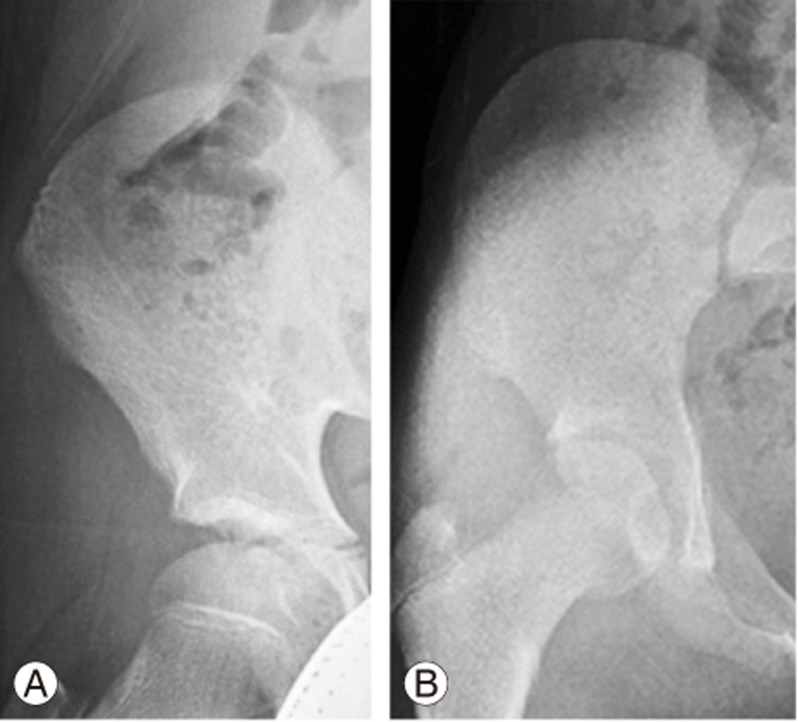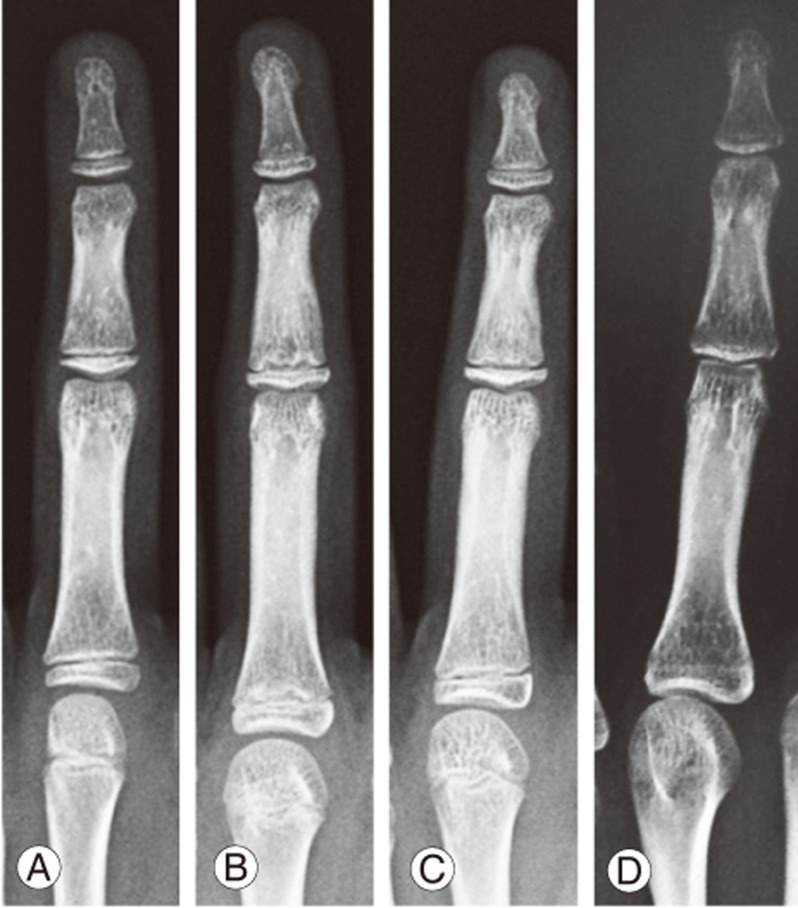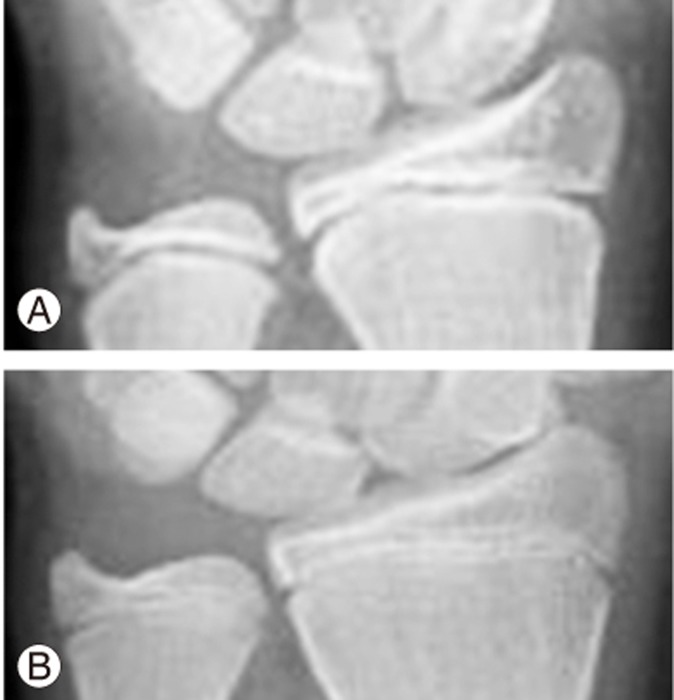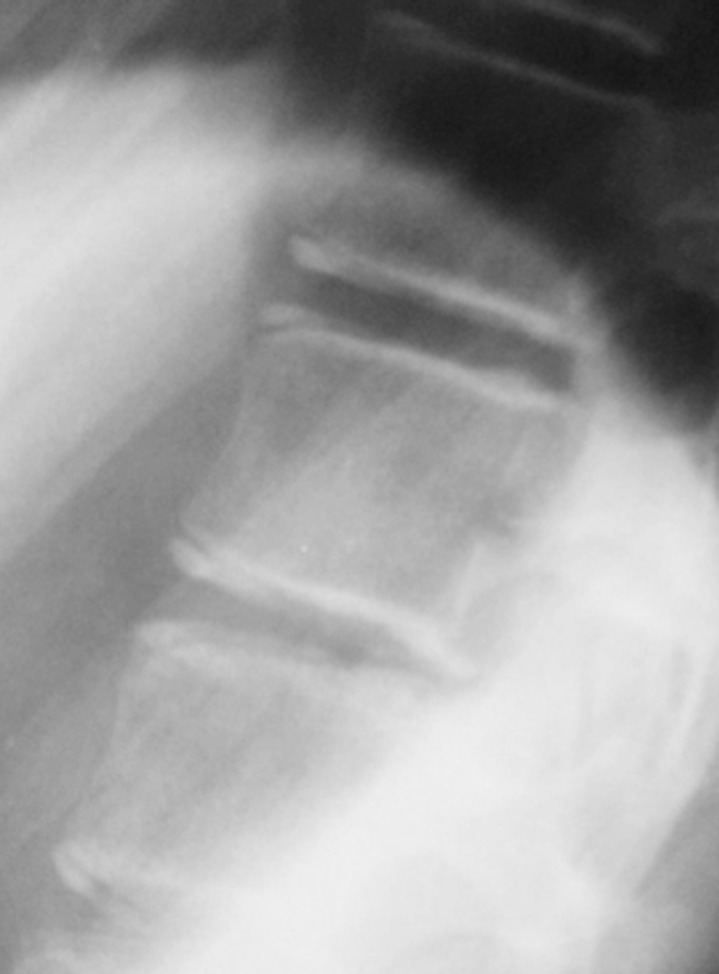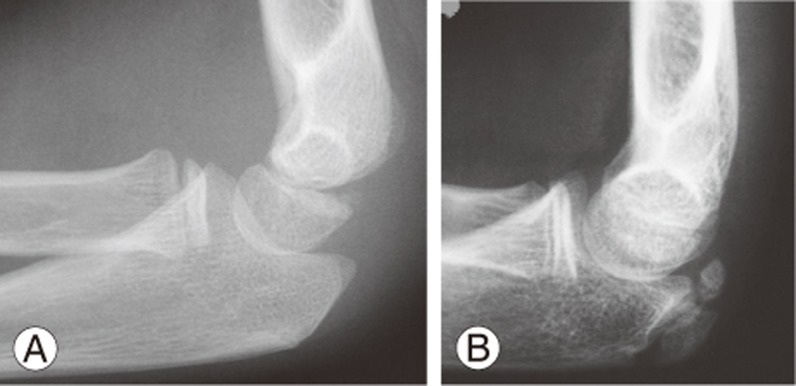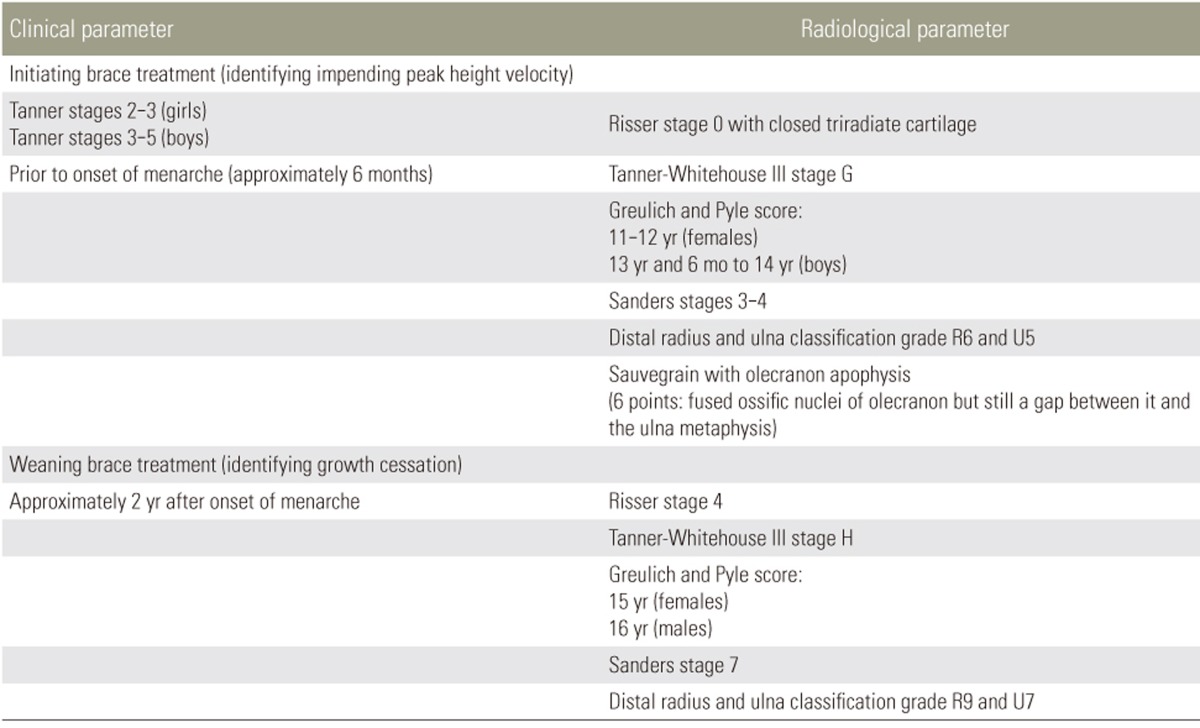1. Akbarnia BA, Emans JB. Complications of growth-sparing surgery in early onset scoliosis. Spine (Phila Pa 1976) 2010 35:2193–2204. PMID:
21102293.


2. Bess S, Akbarnia BA, Thompson GH, et al. Complications of growing-rod treatment for early-onset scoliosis: analysis of one hundred and forty patients. J Bone Joint Surg Am 2010 92:2533–2543. PMID:
20889912.


3. Campbell RM Jr, Smith MD, Mayes TC, et al. The characteristics of thoracic insufficiency syndrome associated with fused ribs and congenital scoliosis. J Bone Joint Surg Am 2003 85-A:399–408. PMID:
12637423.

5. Goldberg CJ, Gillic I, Connaughton O, et al. Respiratory function and cosmesis at maturity in infantile-onset scoliosis. Spine (Phila Pa 1976) 2003 28:2397–2406. PMID:
14560091.


6. James JI. Idiopathic scoliosis; the prognosis, diagnosis, and operative indications related to curve patterns and the age at onset. J Bone Joint Surg Br 1954 36-B:36–49. PMID:
13130619.


7. James JI, Lloyd-Roberts GC, Pilcher MF. Infantile structural scoliosis. J Bone Joint Surg Br 1959 41-B:719–735. PMID:
13853092.


8. Redding GJ, Mayer OH. Structure-respiration function relationships before and after surgical treatment of early-onset scoliosis. Clin Orthop Relat Res 2011 469:1330–1334. PMID:
20978878.


9. Akbarnia BA, Breakwell LM, Marks DS, et al. Dual growing rod technique followed for three to eleven years until final fusion: the effect of frequency of lengthening. Spine (Phila Pa 1976) 2008 33:984–990. PMID:
18427320.


10. Akbarnia BA, Marks DS, Boachie-Adjei O, Thompson AG, Asher MA. Dual growing rod technique for the treatment of progressive early-onset scoliosis: a multicenter study. Spine (Phila Pa 1976) 2005 30(17 Suppl): S46–S57. PMID:
16138066.


11. Winter RB, Moe JH, Lonstein JE. Posterior spinal arthrodesis for congenital scoliosis: an analysis of the cases of two hundred and ninety patients, five to nineteen years old. J Bone Joint Surg Am 1984 66:1188–1197. PMID:
6490695.


12. Cheung JP, Bow C, Samartzis D, Ganal-Antonio AK, Cheung KM. Clinical utility of ultrasound to prospectively monitor distraction of magnetically controlled growing rods. Spine J 2016 16:204–209. PMID:
26523963.


13. Cheung JP, Bow C, Samartzis D, Kwan K, Cheung KM. Frequent small distractions with a magnetically controlled growing rod for early-onset scoliosis and avoidance of the law of diminishing returns. J Orthop Surg (Hong Kong) 2016 24:332–337. PMID:
28031501.


14. Cheung JP, Cahill P, Yaszay B, Akbarnia BA, Cheung KM. Special article: Update on the magnetically controlled growing rod: tips and pitfalls. J Orthop Surg (Hong Kong) 2015 23:383–390. PMID:
26715724.


15. Cheung JP, Samartzis D, Cheung KM. A novel approach to gradual correction of severe spinal deformity in a pediatric patient using the magnetically-controlled growing rod. Spine J 2014 14:e7–e13.

16. Cheung KM, Cheung JP, Samartzis D, et al. Magnetically controlled growing rods for severe spinal curvature in young children: a prospective case series. Lancet 2012 379:1967–1974. PMID:
22520264.


17. Betz RR, D'Andrea LP, Mulcahey MJ, Chafetz RS. Vertebral body stapling procedure for the treatment of scoliosis in the growing child. Clin Orthop Relat Res 2005 (434): 55–60.

18. Betz RR, Kim J, D'Andrea LP, Mulcahey MJ, Balsara RK, Clements DH. An innovative technique of vertebral body stapling for the treatment of patients with adolescent idiopathic scoliosis: a feasibility, safety, and utility study. Spine (Phila Pa 1976) 2003 28:S255–S265. PMID:
14560201.


19. Danielsson AJ, Hasserius R, Ohlin A, Nachemson AL. A prospective study of brace treatment versus observation alone in adolescent idiopathic scoliosis: a follow-up mean of 16 years after maturity. Spine (Phila Pa 1976) 2007 32:2198–2207. PMID:
17873811.


20. Maruyama T. Bracing adolescent idiopathic scoliosis: a systematic review of the literature of effective conservative treatment looking for end results 5 years after weaning. Disabil Rehabil 2008 30:786–791. PMID:
18432436.


21. Weinstein SL, Dolan LA, Wright JG, Dobbs MB. Effects of bracing in adolescents with idiopathic scoliosis. N Engl J Med 2013 369:1512–1521. PMID:
24047455.



22. Cheung JP, Cheung PW, Samartzis D, Cheung KM, Luk KD. The use of the distal radius and ulna classification for the prediction of growth: peak growth spurt and growth cessation. Bone Joint J 2016 98-B:1689–1696. PMID:
27909133.


23. Katz DE, Durrani AA. Factors that influence outcome in bracing large curves in patients with adolescent idiopathic scoliosis. Spine (Phila Pa 1976) 2001 26:2354–2361. PMID:
11679821.


24. Landauer F, Wimmer C, Behensky H. Estimating the final outcome of brace treatment for idiopathic thoracic scoliosis at 6-month follow-up. Pediatr Rehabil 2003 6:201–207. PMID:
14713586.


25. Rahman T, Bowen JR, Takemitsu M, Scott C. The association between brace compliance and outcome for patients with idiopathic scoliosis. J Pediatr Orthop 2005 25:420–422. PMID:
15958887.


26. Cheung KM, Cheng EY, Chan SC, Yeung KW, Luk KD. Outcome assessment of bracing in adolescent idiopathic scoliosis by the use of the SRS-22 questionnaire. Int Orthop 2007 31:507–511. PMID:
16896864.


27. Climent JM, Sanchez J. Impact of the type of brace on the quality of life of adolescents with spine deformities. Spine (Phila Pa 1976) 1999 24:1903–1908. PMID:
10515014.


28. Noonan KJ, Dolan LA, Jacobson WC, Weinstein SL. Long-term psychosocial characteristics of patients treated for idiopathic scoliosis. J Pediatr Orthop 1997 17:712–717. PMID:
9591971.


29. Odermatt D, Mathieu PA, Beausejour M, Labelle H, Aubin CE. Electromyography of scoliotic patients treated with a brace. J Orthop Res 2003 21:931–936. PMID:
12919883.


30. Ugwonali OF, Lomas G, Choe JC, et al. Effect of bracing on the quality of life of adolescents with idiopathic scoliosis. Spine J 2004 4:254–260. PMID:
15125845.


31. Vasiliadis E, Grivas TB, Savvidou O, Triantafyllopoulos G. The influence of brace on quality of life of adolescents with idiopathic scoliosis. Stud Health Technol Inform 2006 123:352–356. PMID:
17108451.

32. Dubousset J, Herring JA, Shufflebarger H. The crankshaft phenomenon. J Pediatr Orthop 1989 9:541–550. PMID:
2794027.


33. Sanders JO, Herring JA, Browne RH. Posterior arthrodesis and instrumentation in the immature (Risser-grade-0) spine in idiopathic scoliosis. J Bone Joint Surg Am 1995 77:39–45. PMID:
7822354.


34. Parent AS, Teilmann G, Juul A, Skakkebaek NE, Toppari J, Bourguignon JP. The timing of normal puberty and the age limits of sexual precocity: variations around the world, secular trends, and changes after migration. Endocr Rev 2003 24:668–693. PMID:
14570750.


35. Dimeglio A. Growth in pediatric orthopaedics. J Pediatr Orthop 2001 21:549–555. PMID:
11433174.


36. Auchus RJ. The physiology and biochemistry of adrenarche. Endocr Dev 2011 20:20–27. PMID:
21164255.


37. Plant TM, Barker-Gibb ML. Neurobiological mechanisms of puberty in higher primates. Hum Reprod Update 2004 10:67–77. PMID:
15005465.


38. Saenger P, Dimartino-Nardi J. Premature adrenarche. J Endocrinol Invest 2001 24:724–733. PMID:
11716159.


39. Cutler GB Jr. The role of estrogen in bone growth and maturation during childhood and adolescence. J Steroid Biochem Mol Biol 1997 61:141–144. PMID:
9365183.


40. Grumbach MM. Estrogen, bone, growth and sex: a sea change in conventional wisdom. J Pediatr Endocrinol Metab 2000 13(Suppl 6): 1439–1455. PMID:
11202221.


41. Grumbach MM. The role of estrogen in the male and female: evidence from mutations in synthesis and action. Horm Res 2000 53(Suppl 3): 23–24. PMID:
10971098.


42. Lee PA, Witchel SF. The influence of estrogen on growth. Curr Opin Pediatr 1997 9:431–436. PMID:
9300203.


43. Nilsson O, Chrysis D, Pajulo O, et al. Localization of estrogen receptors-alpha and -beta and androgen receptor in the human growth plate at different pubertal stages. J Endocrinol 2003 177:319–326. PMID:
12740020.


44. Styne DM. The regulation of pubertal growth. Horm Res 2003 60:22–26. PMID:
12955014.


45. Akbarnia BA, Campbell RM, Dimeglio A, et al. Fusionless procedures for the management of early-onset spine deformities in 2011: what do we know? J Child Orthop 2011 5:159–172. PMID:
22654977.



46. Dimeglio A, Bonnel F, Canavese F,Normal growth of the spine and thorax. Akbarnia BA, Yazici M, Thompson GH, editors. The growing spine. New York: Springer; 2009. p.11–41.
47. Dimeglio A, Canavese F. The growing spine: how spinal deformities influence normal spine and thoracic cage growth. Eur Spine J 2012 21:64–70. PMID:
21874626.


48. Charles YP, Dimeglio A, Marcoul M, Bourgin JF, Marcoul A, Bozonnat MC. Influence of idiopathic scoliosis on three-dimensional thoracic growth. Spine (Phila Pa 1976) 2008 33:1209–1218. PMID:
18469694.


49. Dimeglio A. Growth of the spine before age 5 years. J Pediatr Orthop B 1993 1:102–107.

50. Dimeglio A,Growth in pediatric orthopaedics. Morrissy RT, Weinstein SL, editors. Lovell and Winter's pediatric orthopaedics. 6th ed. Philadelphia: Lippincott Williams & Wilkins; 2006. p.33–62.
51. Cheng JC, Leung SS, Chiu BS, et al. Can we predict body height from segmental bone length measurements? A study of 3,647 children. J Pediatr Orthop 1998 18:387–393. PMID:
9600569.


52. Jarzem PF, Gledhill RB. Predicting height from arm measurements. J Pediatr Orthop 1993 13:761–765. PMID:
8245203.


53. Berend N, Rynell AC, Ward HE. Structure of a human pulmonary acinus. Thorax 1991 46:117–121. PMID:
2014492.



54. DeGroodt EG, van Pelt W, Borsboom GJ, Quanjer PH, van Zomeren BC. Growth of lung and thorax dimensions during the pubertal growth spurt. Eur Respir J 1988 1:102–108. PMID:
3360086.


55. Karol LA, Johnston C, Mladenov K, Schochet P, Walters P, Browne RH. Pulmonary function following early thoracic fusion in non-neuromuscular scoliosis. J Bone Joint Surg Am 2008 90:1272–1281. PMID:
18519321.


56. Pehrsson K, Larsson S, Oden A, Nachemson A. Long-term follow-up of patients with untreated scoliosis: a study of mortality, causes of death, and symptoms. Spine (Phila Pa 1976) 1992 17:1091–1096. PMID:
1411763.


57. Tanner JM. Growth at adolescence. Oxford: Blackwell Scientific Publications; 1962.
58. Busscher I, Kingma I, Wapstra FH, Bulstra SK, Verkerke GJ, Veldhuizen AG. The value of shoe size for prediction of the timing of the pubertal growth spurt. Scoliosis 2011 6:1PMID:
21251310.



59. Tanner JM. Normal growth and techniques of growth assessment. Clin Endocrinol Metab 1986 15:411–451.

60. Tanner JM, Whitehouse RH. Clinical longitudinal standards for height, weight, height velocity, weight velocity, and stages of puberty. Arch Dis Child 1976 51:170–179. PMID:
952550.



61. Sanders JO, Browne RH, Cooney TE, Finegold DN, McConnell SJ, Margraf SA. Correlates of the peak height velocity in girls with idiopathic scoliosis. Spine (Phila Pa 1976) 2006 31:2289–2295. PMID:
16985455.


62. Risser JC. The Iliac apophysis; an invaluable sign in the management of scoliosis. Clin Orthop 1958 11:111–119. PMID:
13561591.


63. Chang SH, Tzeng SJ, Cheng JY, Chie WC. Height and weight change across menarche of schoolgirls with early menarche. Arch Pediatr Adolesc Med 2000 154:880–884. PMID:
10980790.


64. Risser JC. Iliac apophysis. Clin Orthop Relat Res 1977 (122): 366PMID:
837620.


65. Risser JC. The classic: The iliac apophysis: an invaluable sign in the management of scoliosis. 1958. Clin Orthop Relat Res 2010 468:643–653. PMID:
19763720.


66. Urbaniak JR, Schaefer WW, Stelling FH 3rd. Iliac apophyses: prognostic value in idiopathic schliosis. Clin Orthop Relat Res 1976 (116): 80–85.

67. Zaoussis AL, James JI. The iliac apophysis and the evolution of curves in scoliosis. J Bone Joint Surg Br 1958 40-B:442–453. PMID:
13575458.


68. Bitan FD, Veliskakis KP, Campbell BC. Differences in the Risser grading systems in the United States and France. Clin Orthop Relat Res 2005 (436): 190–195. PMID:
15995440.


69. Shuren N, Kasser JR, Emans JB, Rand F. Reevaluation of the use of the Risser sign in idiopathic scoliosis. Spine (Phila Pa 1976) 1992 17:359–361. PMID:
1566172.


70. Biondi J, Weiner DS, Bethem D, Reed JF 3rd. Correlation of Risser sign and bone age determination in adolescent idiopathic scoliosis. J Pediatr Orthop 1985 5:697–701. PMID:
4066945.


71. Dhar S, Dangerfield PH, Dorgan JC, Klenerman L. Correlation between bone age and Risser's sign in adolescent idiopathic scoliosis. Spine (Phila Pa 1976) 1993 18:14–19. PMID:
8434315.


72. Hoppenfeld S, Lonner B, Murthy V, Gu Y. The rib epiphysis and other growth centers as indicators of the end of spinal growth. Spine (Phila Pa 1976) 2004 29:47–50. PMID:
14699275.


73. Little DG, Sussman MD. The Risser sign: a critical analysis. J Pediatr Orthop 1994 14:569–575. PMID:
7962495.


74. Little DG, Song KM, Katz D, Herring JA. Relationship of peak height velocity to other maturity indicators in idiopathic scoliosis in girls. J Bone Joint Surg Am 2000 82:685–693. PMID:
10819279.


75. Nault ML, Parent S, Phan P, Roy-Beaudry M, Labelle H, Rivard M. A modified Risser grading system predicts the curve acceleration phase of female adolescent idiopathic scoliosis. J Bone Joint Surg Am 2010 92:1073–1081. PMID:
20439651.


76. Fawcett SL, Barter SJ. The use of gonad shielding in paediatric hip and pelvis radiographs. Br J Radiol 2009 82:363–370. PMID:
19386959.


77. Gul A, Zafar M, Maffulli N. Gonadal shields in pelvic radiographs in pediatric patients. Bull Hosp Jt Dis 2005 63:13–14. PMID:
16536211.

78. Karol LA, Johnston CE 2nd, Browne RH, Madison M. Progression of the curve in boys who have idiopathic scoliosis. J Bone Joint Surg Am 1993 75:1804–1810. PMID:
8258551.


79. Wang WW, Xia CW, Zhu F, et al. Correlation of Risser sign, radiographs of hand and wrist with the histological grade of iliac crest apophysis in girls with adolescent idiopathic scoliosis. Spine (Phila Pa 1976) 2009 34:1849–1854. PMID:
19644336.


80. Pietka E, Gertych A, Pospiech S, Cao F, Huang HK, Gilsanz V. Computer-assisted bone age assessment: image preprocessing and epiphyseal/metaphyseal ROI extraction. IEEE Trans Med Imaging 2001 20:715–729. PMID:
11513023.


81. Tanner JM, Whitehouse RH, Marshall WA, Healy MJ, Goldstein H. Skeletal maturity and prediction of adult height (TW2 Method). New York: Academic; 1965.
82. Kirks DR. Practical pediatric imaging: diagnostic radiology of infants and children. Boston: Little, Brown and Co.; 1984.
83. Buckler JM. Skeletal age changes in puberty. Arch Dis Child 1984 59:115–119. PMID:
6703762.



84. Parfitt AM. Misconceptions (1): epiphyseal fusion causes cessation of growth. Bone 2002 30:337–339. PMID:
11856639.


85. Tanner JM, Whitehouse RH, Hughes PC, Carter BS. Relative importance of growth hormone and sex steroids for the growth at puberty of trunk length, limb length, and muscle width in growth hormone-deficient children. J Pediatr 1976 89:1000–1008. PMID:
993900.


86. Tanner JM, Whitehouse RH, Marubini E, Resele LF. The adolescent growth spurt of boys and girls of the Harpenden growth study. Ann Hum Biol 1976 3:109–126. PMID:
1275435.


87. Greulich WW, Pyle SI. Radiographic atlas of skeletal development of the hand and wrist. Stanford: Stanford University Press; 1959.
88. Tanner JM, Whitehouse RH, Marshall WA, Healy MJ, Goldstein H. Assessment of skeleta l maturity and prediction of adult height (TW3 Method). New York: Academic Press; 1975.
89. Todd TW. Atlas of skeletal maturation (hand). St. Louis: C. V. Mosby Co.; 1937.
90. Bull RK, Edwards PD, Kemp PM, Fry S, Hughes IA. Bone age assessment: a large scale comparison of the Greulich and Pyle, and Tanner and Whitehouse (TW2) methods. Arch Dis Child 1999 81:172–173. PMID:
10490531.



91. Thodberg HH, Kreiborg S, Juul A, Pedersen KD. The BoneXpert method for automated determination of skeletal maturity. IEEE Trans Med Imaging 2009 28:52–66. PMID:
19116188.


92. Sanders JO, Khoury JG, Kishan S, et al. Predicting scoliosis progression from skeletal maturity: a simplified classification during adolescence. J Bone Joint Surg Am 2008 90:540–553. PMID:
18310704.


93. Luk KD, Saw LB, Grozman S, Cheung KM, Samartzis D. Assessment of skeletal maturity in scoliosis patients to determine clinical management: a new classification scheme using distal radius and ulna radiographs. Spine J 2014 14:315–325. PMID:
24239801.


94. Cheung JP, Samartzis D, Cheung PW, Cheung KM, Luk KD. Reliability analysis of the distal radius and ulna classification for assessing skeletal maturity for patients with adolescent idiopathic scoliosis. Global Spine J 2016 6:164–168. PMID:
26933618.


95. Cheung JP, Samartzis D, Cheung PW, Leung KH, Cheung KM, Luk KD. The distal radius and ulna classification in assessing skeletal maturity: a simplified scheme and reliability analysis. J Pediatr Orthop B 2015 24:546–551. PMID:
26196369.


96. Albert AM, Maples WR. Stages of epiphyseal union for thoracic and lumbar vertebral centra as a method of age determination for teenage and young adult skeletons. J Forensic Sci 1995 40:623–633. PMID:
7595300.


97. Grave K, Townsend G. Hand-wrist and cervical vertebral maturation indicators: how can these events be used to time Class II treatments? Aust Orthod J 2003 19:33–45. PMID:
14703328.


98. Grave K, Townsend G. Cervical vertebral maturation as a predictor of the adolescent growth spurt. Aust Orthod J 2003 19:25–32. PMID:
12790353.


99. Hassel B, Farman AG. Skeletal maturation evaluation using cervical vertebrae. Am J Orthod Dentofacial Orthop 1995 107:58–66. PMID:
7817962.


100. Minars M, Burch J, Masella R, Meister M. Predicting skeletal maturation using cervical vertebrae. Todays FDA 2003 15:17–19.
101. Sauvegrain J, Nahum H, Bronstein H. Study of bone maturation of the elbow. Ann Radiol (Paris) 1962 5:542–550. PMID:
13986863.

102. Dimeglio A, Charles YP, Daures JP, de Rosa V, Kabore B. Accuracy of the Sauvegrain method in determining skeletal age during puberty. J Bone Joint Surg Am 2005 87:1689–1696. PMID:
16085606.






